|
Funny on other blogs:
Privacy Policy
|
|
�
Top 10 Greatest Impostors in History
Published on 4/4/2006
Victor Lustig, the man who sold the Eiffel Tower
 Victor Lustig (1890-1947) is held to have been one of the most talented confidence
tricksters who ever lived. Lustig's first con involved selling a $30,000 money-printing
machine that didn't worked well.
Victor Lustig (1890-1947) is held to have been one of the most talented confidence
tricksters who ever lived. Lustig's first con involved selling a $30,000 money-printing
machine that didn't worked well.
In 1925, Lustig's master con began when he was reading a newspaper: an article
discussed the problems the city was having maintaining the Eiffel Tower. So he
adopted the persona of a government official, and sent six scrap metal dealers an
invitation to discuss a possible business deal.
Lustig told the group that the upkeep on the Eiffel Tower was so outrageous that the
city could not maintain it any longer, and wanted to sell it for scrap. So he sold
the Eiffel Tower to one of the scrap metal dealers and took a train to Vienna with the
suitcase full of cash. The buyer was too humiliated to complain to the police.
Later, Lustig convinced Al Capone to invest $40,000 in a stock deal. Lustig kept
Capone's money in a safe deposit box for two months, then returned it to him,
claiming that the deal had fallen through. Impressed with Lustig's integrity, Capone gave
him $5,000. It was, of course, all that Lustig was after.
On 1907, Lustig arrived to the United States and conducted a number of scams, but eventually
his luck ran out: he was arrested for counterfeiting and sent to Alcatraz prison.
Frank Abagnale, catch me if you can
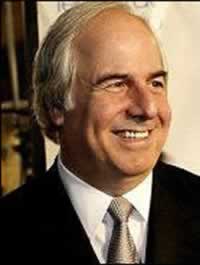 Frank William Abagnale, Jr. (born April 27, 1948) was an impostor for five years in the
1960s. His first con was writing checks on his own overdrawn account. Then he
printed out his own, almost perfect copies of checks. He also collected over
US$40,000 by printing his account number on blank bank deposit slips and added them
to the stack of real blank slips in the bank.
Frank William Abagnale, Jr. (born April 27, 1948) was an impostor for five years in the
1960s. His first con was writing checks on his own overdrawn account. Then he
printed out his own, almost perfect copies of checks. He also collected over
US$40,000 by printing his account number on blank bank deposit slips and added them
to the stack of real blank slips in the bank.
For a period of two years, Abagnale masqueraded as Pan Am pilot "Frank Williams", to
get free rides around the world by dead heading on scheduled airline flights. Later,
he impersonated a pediatrician for 11 months in a Georgia hospital under the name
"Frank Williams". He also forged a Harvard University Law diploma, passed the bar
exam of Louisiana and got a job at the office of the State Attorney General of Louisiana.
Over 5 years he worked under 8 identities, though he used many more to cash checks,
and passed bad checks worth over $2,5 million in 26 countries. The money was used for
a lifestyle in which he dated flight attendants, ate at expensive restaurants,
bought expensive clothing, and prepared for his next con.
The movie "Catch Me If You Can" is loosely based on his exploits. He currently runs
Abagnale and Associates, a financial fraud consultancy company.
Christopher Rocancourt, the french Rockefeller
 Christophe Thierry Rocancourt (1967-) is an impostor and con artist who scammed affluent
people by masquerading as a French member of the Rockefeller family.
Christophe Thierry Rocancourt (1967-) is an impostor and con artist who scammed affluent
people by masquerading as a French member of the Rockefeller family.
His mother worked as a prostitute and his father was an alcoholic who took Christophe to an
orphanage when the boy was 5. He ran away and made his way to Paris where he pulled his
first big con: faking the deed to a property he didn't own, then "selling" the
property for $1,4 million.
Making his way to the United States, Rocancourt used at least a dozen aliases. In Los
Angeles, he pretended to be a movie producer, boxing champion or venture capitalist. He
dropped names like "his mother" Sophia Loren or "his uncles" Oscar de la Renta
and Dino de Laurentiis and was associated with various celebrities. He married Playboy
model Pía Reyes; they had a son, Zeus. He lived for a time with Mickey Rourke.
In Canada, Rocancourt wrote an autobiography in which he ridiculed his victims. In
March 2002 he was extradited to New York. He pled guilty to 3 of 11 different charges
including theft, grand larceny, smuggling, bribery and perjury. He estimated that he
"made" at least $40 million.
Ferdinand Demara, the Great Impostor
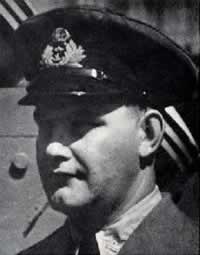 Ferdinand Waldo Demara (1921-1982), known as "the Great Impostor", masqueraded as many
people from monks to surgeons to prison wardens.
Ferdinand Waldo Demara (1921-1982), known as "the Great Impostor", masqueraded as many
people from monks to surgeons to prison wardens.
He joined the U.S. Army in 1941 and began his new lives by borrowing the name of his army
buddy Anthony Ignolia and went AWOL. He then faked his suicide and borrowed another
name, Robert Linton French, and became a religiously-oriented psychologist. Both
Navy and Army caught him eventually and he served 18 months in prison.
A string of pseudo-academic careers followed. He was, among other things, a civil
engineer, a sheriff's deputy, an assistant prison warden, a doctor of applied psychology, a
hospital orderly, a lawyer, a child-care expert, a Benedictine monk, a Trappist monk, an
editor, a cancer researcher, and a teacher. One teaching job led to a six months in prison.
He never seemed to get much monetary gain in what he was doing - just temporary
respectability.
His most famous exploit was to masquerade as surgeon Joseph Cyr about HMCS Cayuga, a
Canadian Navy destroyer, during the Korean War. He managed to improvise successful
surgeries and fend off infection with generous amounts of penicillin. This worked until
the mother of the real Dr. Joseph Cyr found out and reported it.
Demara returned to the U.S., inspired the 1960 film "The Great Imposter", and died on
1982 as a Baptist minister.
David Hampton, less than Six Degrees of Separation from
Sidney Poitier
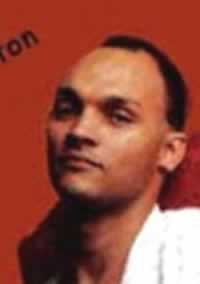 David Hampton (1964-2003) was an African-American con artist. Unable to gain entry at Studio
54, Hampton assumed the identity of Sidney Poitier's son and was suddenly ushered
in as celebrity.
David Hampton (1964-2003) was an African-American con artist. Unable to gain entry at Studio
54, Hampton assumed the identity of Sidney Poitier's son and was suddenly ushered
in as celebrity.
Hampton began employing the persona of "David Poitier" to cadge free meals in restaurants.
He then persuaded at least a dozen people into letting him stay with them in
their homes or to give him money, including Melanie Griffith, Gary Sinise, and Calvin
Klein. He told some of them that he was a friend of their children, some that he
had just missed his plane to Los Angeles and that all his luggage was on it, some that his
belongings had been stolen.
On 1983, Hampton was arrested and convicted for his frauds and was ordered to pay
restitution of $4,490 to his various victims. His story became the inspiration for a play
and later a movie, titled "Six Degrees of Separation". David Hampton died of
AIDS-related complications in 2003.
Milli Vanilli, the pop duo who couldn't sing
 Milli Vanilli was a pop vocal duo composed of Fab Morvan and Rob Pilatus that formed
in Germany in the mid-1980s.
Milli Vanilli was a pop vocal duo composed of Fab Morvan and Rob Pilatus that formed
in Germany in the mid-1980s.
Milli Vanilli started to grow worldwide as of 1988 and won the Grammy Award for Best New
Artist on 1990. But in the same year, during a 'live' performance recorded by MTV
at the Lake Compounce theme park in Connecticut, the recording of the song "Girl You Know
It's True" jammed and began to skip, resulting in one of the most embarrassing
moments in popular music history.
So the truth was revealed: the Milli Vanilli sound was actually created by Frank Farian
featuring the vocal talents of other singers, and Morvan and Pilatus did not sing at
all on the records.
After this, the Grammy Award they received was stripped from them, and at
least 26 different lawsuits were filed under various U.S. consumer fraud protection
laws against Pilatus, Morvan and Arista Records.
Cassie Chadwick, the illegitimate daughter of Andrew
Carnegie
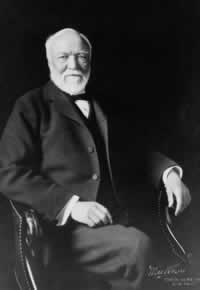 Cassie Chadwick (1857-1907) is the most famous name of a Canadian woman born as
Elizabeth Bigley. At the age of 22 she was arrested in Woodstock, Ontario for forgery but
released on grounds of insanity. In 1882 she married Wallace Springsteen in
Cleveland, Ohio; her husband threw her out eleven days later when he found out about
her past. In Cleveland, she married a Dr. Chadwick.
Cassie Chadwick (1857-1907) is the most famous name of a Canadian woman born as
Elizabeth Bigley. At the age of 22 she was arrested in Woodstock, Ontario for forgery but
released on grounds of insanity. In 1882 she married Wallace Springsteen in
Cleveland, Ohio; her husband threw her out eleven days later when he found out about
her past. In Cleveland, she married a Dr. Chadwick.
In 1897, Cassie began her largest, most successful con game: that of establishing herself
as Andrew Carnegie's daughter. She faked a promissory note of $2 million with Carnegie's
signature. The information leaked to the financial markets in northern Ohio, and banks
begun to offer their services. For the next eight years she used this fake
background to obtain loans that eventually totaled between $10 and 20 million.
When Carnegie was later asked about her, he denied ever knowing her: the scheme
collapsed, she was arrested and the trial was a media circus. She died in
jail.
Mary Baker, the Princess Caraboo from the island of Javasu
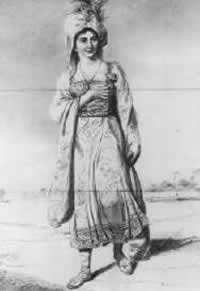 On 1817, a cobbler in England, met an apparently disoriented young woman with exotic
clothes who was speaking a language no one could understand. Locals brought many
foreigners who tried to find out what strange language the lady was talking, until a
Portuguese sailor "translated" her story: she was Princess Caraboo from the island of
Javasu in the Indian Ocean. She had been captured by pirates, then jumped
overboard in the Bristol Channel and swam ashore.
On 1817, a cobbler in England, met an apparently disoriented young woman with exotic
clothes who was speaking a language no one could understand. Locals brought many
foreigners who tried to find out what strange language the lady was talking, until a
Portuguese sailor "translated" her story: she was Princess Caraboo from the island of
Javasu in the Indian Ocean. She had been captured by pirates, then jumped
overboard in the Bristol Channel and swam ashore.
For the next ten weeks, this representative of exotic royalty was a favourite of the
local dignataries. She used a bow and arrow, fenced, swam naked and prayed to
God, whom she termed Allah Tallah. She acquired exotic clothing and a portrait made of
her was reproduced in local newspapers.
Eventually the truth came out: she was actually a cobbler's daughter, Mary Baker, from
Devon. She had been a servant girl in various places all over England but had not found a
place to stay. She had invented a fictitious language out of imaginary and gypsy
words and created an exotic character.
She continued her role in the USA, France and Spain without the same luck. Her story was the
basis of the 1994 movie "Princess Caraboo", written by John Wells.
Wilhelm Voigt, the amusing Captain of Köpenick
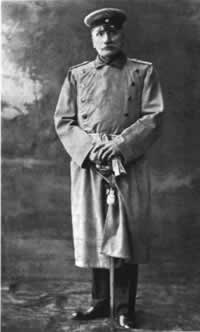 Wilhelm Voigt (1849-1922) was a German impostor who masqueraded as a Prussian military
officer in 1906 and became famous as the Captain of Köpenick.
Wilhelm Voigt (1849-1922) was a German impostor who masqueraded as a Prussian military
officer in 1906 and became famous as the Captain of Köpenick.
On 1906 he had purchased parts of used captain's uniforms and, once in Köpenick, he went to
the local army barracks, stopped four grenadiers and a sergeant on their way back to
barracks and told them to come with him. Indoctrinated to obey officers without question,
they followed.
He had the town secretary Rosenkranz and Mayor Georg Langerhans arrested for
suspicions of crooked bookkeeping and confiscated 4000 marks and 70 pfennigs - with a
receipt, of course. Then he commandeered two carriages and told the grenadiers to take the
Mayor and the treasurer Wiltberg to Berlin to General Moltke for interrogation. He told the
remaining guards to stand in their places for half an hour and then left for the train station.
In the train he changed to civilian clothes and slipped out.
Voigt was arrested and sentenced to four years in prison for forgery, impersonating
an officer and wrongful imprisonment. However, much of the public opinion was on his side.
German Kaiser Wilhelm II pardoned him on 1908. There are some claims that even the
Kaiser had been amused by the incident.
George Psalmanazar, the first Formosan to visit Europe
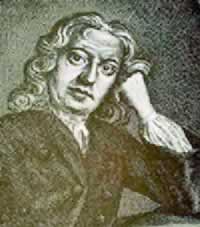 George Psalmanazar (1679-1763) claimed to be the first Formosan to visit Europe. He
appeared in Northern Europe, around the year 1700. He looked European but
claimed he came from the faraway island of Formosa, followed a foreign calendar and
worshipped the Sun and the Moon.
George Psalmanazar (1679-1763) claimed to be the first Formosan to visit Europe. He
appeared in Northern Europe, around the year 1700. He looked European but
claimed he came from the faraway island of Formosa, followed a foreign calendar and
worshipped the Sun and the Moon.
Psalmanazar published a book An Historical and Geographical Description of Formosa,
an Island subject to the Emperor of Japan which revealed a number of strange habits.
Formosa was a prosperous country of wealth with capital city called Xternetsa. Men walked
naked except for a gold or silver plate to cover their privates. Their main food was
a serpent that they hunt with branches. Formosans were polygamous and the husband had a
right to eat their wives for infidelity. They executed murderers by hanging them
upside down and shooting them full of arrows. Annually they sacrificed the hearts of
18,000 young boys to gods and priests ate the bodies. They also used horses and camels
for mass transportation. The book also described the Formosan alphabet.
The book was rather successful. He lectured on Formosan culture and language
and pretended to translate religious literature into Formosan. The Bishop of London
supported him. He spoke before the Royal Society. Eventually, he grew tired of the
deception: in 1706 he confessed, first to friends and then in public.
Submit to:
 Del.icio.us Del.icio.us
 Netscape Netscape
 Furl Furl
 Facebook Facebook
 |
|
|
|
|
|
 Send by Email Send by Email
|
�
|
|
|
|


 Del.icio.us
Del.icio.us
 Netscape
Netscape
 Furl
Furl
 Facebook
Facebook
 Victor Lustig (1890-1947) is held to have been one of the most talented confidence
tricksters who ever lived. Lustig's first con involved selling a $30,000 money-printing
machine that didn't worked well.
Victor Lustig (1890-1947) is held to have been one of the most talented confidence
tricksters who ever lived. Lustig's first con involved selling a $30,000 money-printing
machine that didn't worked well.
 Frank William Abagnale, Jr. (born April 27, 1948) was an impostor for five years in the
1960s. His first con was writing checks on his own overdrawn account. Then he
printed out his own, almost perfect copies of checks. He also collected over
US$40,000 by printing his account number on blank bank deposit slips and added them
to the stack of real blank slips in the bank.
Frank William Abagnale, Jr. (born April 27, 1948) was an impostor for five years in the
1960s. His first con was writing checks on his own overdrawn account. Then he
printed out his own, almost perfect copies of checks. He also collected over
US$40,000 by printing his account number on blank bank deposit slips and added them
to the stack of real blank slips in the bank.
 Christophe Thierry Rocancourt (1967-) is an impostor and con artist who scammed affluent
people by masquerading as a French member of the Rockefeller family.
Christophe Thierry Rocancourt (1967-) is an impostor and con artist who scammed affluent
people by masquerading as a French member of the Rockefeller family.
 Ferdinand Waldo Demara (1921-1982), known as "the Great Impostor", masqueraded as many
people from monks to surgeons to prison wardens.
Ferdinand Waldo Demara (1921-1982), known as "the Great Impostor", masqueraded as many
people from monks to surgeons to prison wardens.
 David Hampton (1964-2003) was an African-American con artist. Unable to gain entry at Studio
54, Hampton assumed the identity of Sidney Poitier's son and was suddenly ushered
in as celebrity.
David Hampton (1964-2003) was an African-American con artist. Unable to gain entry at Studio
54, Hampton assumed the identity of Sidney Poitier's son and was suddenly ushered
in as celebrity.
 Milli Vanilli was a pop vocal duo composed of Fab Morvan and Rob Pilatus that formed
in Germany in the mid-1980s.
Milli Vanilli was a pop vocal duo composed of Fab Morvan and Rob Pilatus that formed
in Germany in the mid-1980s.
 Cassie Chadwick (1857-1907) is the most famous name of a Canadian woman born as
Elizabeth Bigley. At the age of 22 she was arrested in Woodstock, Ontario for forgery but
released on grounds of insanity. In 1882 she married Wallace Springsteen in
Cleveland, Ohio; her husband threw her out eleven days later when he found out about
her past. In Cleveland, she married a Dr. Chadwick.
Cassie Chadwick (1857-1907) is the most famous name of a Canadian woman born as
Elizabeth Bigley. At the age of 22 she was arrested in Woodstock, Ontario for forgery but
released on grounds of insanity. In 1882 she married Wallace Springsteen in
Cleveland, Ohio; her husband threw her out eleven days later when he found out about
her past. In Cleveland, she married a Dr. Chadwick.
 On 1817, a cobbler in England, met an apparently disoriented young woman with exotic
clothes who was speaking a language no one could understand. Locals brought many
foreigners who tried to find out what strange language the lady was talking, until a
Portuguese sailor "translated" her story: she was Princess Caraboo from the island of
Javasu in the Indian Ocean. She had been captured by pirates, then jumped
overboard in the Bristol Channel and swam ashore.
On 1817, a cobbler in England, met an apparently disoriented young woman with exotic
clothes who was speaking a language no one could understand. Locals brought many
foreigners who tried to find out what strange language the lady was talking, until a
Portuguese sailor "translated" her story: she was Princess Caraboo from the island of
Javasu in the Indian Ocean. She had been captured by pirates, then jumped
overboard in the Bristol Channel and swam ashore.
 Wilhelm Voigt (1849-1922) was a German impostor who masqueraded as a Prussian military
officer in 1906 and became famous as the Captain of Köpenick.
Wilhelm Voigt (1849-1922) was a German impostor who masqueraded as a Prussian military
officer in 1906 and became famous as the Captain of Köpenick.
 George Psalmanazar (1679-1763) claimed to be the first Formosan to visit Europe. He
appeared in Northern Europe, around the year 1700. He looked European but
claimed he came from the faraway island of Formosa, followed a foreign calendar and
worshipped the Sun and the Moon.
George Psalmanazar (1679-1763) claimed to be the first Formosan to visit Europe. He
appeared in Northern Europe, around the year 1700. He looked European but
claimed he came from the faraway island of Formosa, followed a foreign calendar and
worshipped the Sun and the Moon.






























